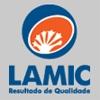Multivariate method for prediction of fumonisins B1 and B2 and zearalenone in Brazilian maize using Near Infrared Spectroscopy (NIR)
Author details:
1. Schatzmayr G, Streit E. Global occurrence of mycotoxins in the food and feed chain: Facts and figures.
World Mycotoxin J. 2013 Aug 1; 6:213–22.
2. Rodrigues I, Naehrer Karin. Prevalence of mycotoxins in feedstuffs and feed surveyed worldwide in
2009 and 2010. Phytopathol Mediterr. 2012 May 1; 51.
3. Sweeney MJ, Dobson AD. Mycotoxin production by Aspergillus, Fusarium and Penicillium species. Int J
Food Microbiol. 1998 Sep; 43(3):141–58. https://doi.org/10.1016/s0168-1605(98)00112-3 PMID:
9801191
4. Rheeder J. P., Marasas J. W. F. O., Thiel P. G., Sydenham E. W., Shephard G. S. and van S DJ. Fusarium moniliforme and Fumonisins in Corn in Relation to Human Esophageal Cancer in Transkei. Phytopathology. 1992;(82):353–7.
5. Bacon CW, Nelson PE. Fumonisin Production in Corn by Toxigenic Strains of Fusarium moniliforme and Fusarium proliferatum. J Food Prot [Internet]. 1994; 57(6):514–21. Available from: https://doi.org/
10.4315/0362-028X-57.6.514 PMID: 31121659
6. Yazar S, Omurtag GZ. Fumonisins, trichothecenes and zearalenone in cereals. Int J Mol Sci [Internet].
2008/10/31. 2008 Nov; 9(11):2062–90. Available from: https://pubmed.ncbi.nlm.nih.gov/19330061 https://doi.org/10.3390/ijms9112062
7. Li F-Q, Luo X-Y, Yoshizawa T. Mycotoxins (trichothecenes, zearalenone and fumonisins) in cereals associated with human red-mold intoxications stored since 1989 and 1991 in China. Nat Toxins [Internet]. 1999 May 1; 7(3):93–7. Available from: https://doi.org/10.1002/(SICI)1522-7189(199905/06)7:3%
3C93::AID-NT45%3E3.0.CO PMID: 10647510
8. Ji F, He D, Olaniran AO, Mokoena MP, Xu J, Shi J. Occurrence, toxicity, production and detection of
Fusarium mycotoxin: a review. Food Prod Process Nutr [Internet]. 2019; 1(1):6. Available from: https:// doi.org/10.1186/s43014-019-0007-2
9. Minervini F, Dell’Aquila ME. Zearalenone and reproductive function in farm animals. Int J Mol Sci [Internet]. 2008/12/11. 2008 Dec; 9(12):2570–84. Available from: https://pubmed.ncbi.nlm.nih.gov/19330093 https://doi.org/10.3390/ijms9122570
10. Kuiper-Goodman T, Scott PM, Watanabe H. Risk assessment of the mycotoxin zearalenone. Regul
Toxicol Pharmacol. 1987 Sep; 7(3):253–306. https://doi.org/10.1016/0273-2300(87)90037-7 PMID:
2961013
11. Shier WT, Shier AC, Xie W, Mirocha CJ. Structure-activity relationships for human estrogenic activity in zearalenone mycotoxins. Toxicon [Internet]. 2001; 39(9):1435–8. Available from: http://www. sciencedirect.com/science/article/pii/S0041010100002592 PMID: 11384734
12. Braun MS, Wink M. Exposure, Occurrence, and Chemistry of Fumonisins and their Cryptic Derivatives.
Compr Rev Food Sci Food Saf [Internet]. 2018 May 1; 17(3):769–91. Available from: https://doi.org/10.
1111/1541-4337.12334 PMID: 33350123
13. Jackson L.; Jablonski J. Fumonisins. In: MAGAN N.; OLSEN M (Org., editor. Mycotoxins in food. Cambridge: Woodhead Publishing; 2004. p. 367–91.
14. Pozzi CR, Arcaro JRP, Arcaro Ju´nior I, Fagundes H, Corrêa B. Aspectos relacionados à ocorrência e mecanismo de ac¸ão de fumonisinas. Vol. 32, Ciência Rural. scielo; 2002. p. 901–7.
15. Lanza FE, Zambolim L, Veras da Costa R, Vieira Queiroz VA, Cota LV, Dionı´sia da Silva D, et al. Prevalence of fumonisin-producing Fusarium species in Brazilian corn grains. Crop Prot [Internet]. 2014;
65:232–7. Available from: http://www.sciencedirect.com/science/article/pii/S0261219414002555
16. Placinta CM, D’Mello JPF, Macdonald AMC. A review of worldwide contamination of cereal grains and animal feed with Fusarium mycotoxins. Anim Feed Sci Technol [Internet]. 1999; 78(1):21–37. Available from: http://www.sciencedirect.com/science/article/pii/S0377840198002788
17. Idahor K. Global distribution of Fumonisin B 1 –A review. acta SATECH. 2010 Jan 8; 3:25–32.
18. Scott PM. Recent research on fumonisins: a review. Food Addit Contam Part A Chem Anal Control Expo
Risk Assess. 2012; 29(2):242–8. https://doi.org/10.1080/19440049.2010.546000 PMID: 21337235
19. Henry MH, Wyatt RD. The toxicity of fumonisin B1, B2, and B3, individually and in combination, in chicken embryos. Poult Sci. 2001 Apr; 80(4):401–7. https://doi.org/10.1093/ps/80.4.401 PMID:
11297276
20. Kobashigawa E. Ocorrência de aflatoxinas e fumonisinas em sistema de produc¸ão de frangos de corte no Estado de São Paulo [tese]. 2010.
21. Marasas WF, Kellerman TS, Gelderblom WC, Coetzer JA, Thiel PG, van der Lugt JJ. Leukoencephalomalacia in a horse induced by fumonisin B1 isolated from Fusarium moniliforme. Onderstepoort J Vet
Res. 1988 Dec; 55(4):197–203. PMID: 3217091
22. Ross PF, Nelson PE, Richard JL, Osweiler GD, Rice LG, Plattner RD, et al. Production of fumonisins by
Fusarium moniliforme and Fusarium proliferatum isolates associated with equine leukoencephalomalacia and a pulmonary edema syndrome in swine. Appl Environ Microbiol. 1990 Oct; 56(10):3225–6. https://doi.org/10.1128/AEM.56.10.3225-3226.1990 PMID: 2285324
23. Missmer SA, Suarez L, Felkner M, Wang E, Merrill AHJ, Rothman KJ, et al. Exposure to fumonisins and the occurrence of neural tube defects along the Texas-Mexico border. Environ Health Perspect. 2006 Feb; 114(2):237–41. https://doi.org/10.1289/ehp.8221 PMID: 16451860
24. Kenneth A. Voss RTR. Fumonisin Toxicity and Mechanism of Action: Overview and Current Perspectives. Food Saf. 2013; 1(1):2013006.
25. Fandohan P, Hell K, Marasas WFO, Wingfield M. Infection of maize by Fusarium species contamination with fumonisin in Africa. African J Biotechnol (ISSN 1684-5315) Vol 2 Num 12. 2003 Dec 31; 2.
26. Chu FS, Li GY. Simultaneous occurrence of fumonisin B1 and other mycotoxins in moldy corn collected from the People’s Republic of China in regions with high incidences of esophageal cancer. Appl Environ
Microbiol. 1994 Mar; 60(3):847–52. https://doi.org/10.1128/AEM.60.3.847-852.1994 PMID: 8161178
27. IARC. monographs on the evaluation of carcinogenic risks to humans. 2002;(Lyon: IARC Press).
28. Zain ME. Impact of mycotoxins on humans and animals. J Saudi Chem Soc [Internet]. 2011; 15(2):129–
44. Available from: http://www.sciencedirect.com/science/article/pii/S1319610310000827
29. Oueslati S, Romero-Gonza´lez R, Lasram S, Frenich AG, Vidal JLM. Multi-mycotoxin determination in cereals and derived products marketed in Tunisia using ultra-high performance liquid chromatography coupled to triple quadrupole mass spectrometry. Food Chem Toxicol [Internet]. 2012; 50(7):2376–81.
Available from: http://dx.doi.org/10.1016/j.fct.2012.04.036 PMID: 22579994
30. Karlsson I, Friberg H, Kolseth A-K, Steinberg C, Persson P. Agricultural factors affecting Fusarium communities in wheat kernels. Int J Food Microbiol [Internet]. 2017; 252:53–60. Available from: http://www. sciencedirect.com/science/article/pii/S0168160517301708 https://doi.org/10.1016/j.ijfoodmicro.2017.
04.011 PMID: 28463719
31. Kanora A, Maes D. The role of mycotoxins in pig reproduction: A review. Vet Med (Praha). 2009 Jan 1;
54:565–76.
32. Cortinovis C, Pizzo F, Spicer LJ, Caloni F. Fusarium mycotoxins: Effects on reproductive function in domestic animals—A review. Theriogenology [Internet]. 2013; 80(6):557–64. Available from: http:// www.sciencedirect.com/science/article/pii/S0093691X13002604 https://doi.org/10.1016/j. theriogenology.2013.06.018 PMID: 23916251
33. el-Sharkawy S, Abul-Hajj Y. Microbial Transformation of Zearalenone, I. Formation of Zearalenone-4-
O-β-glucoside. J Nat Prod [Internet]. 1987 May 1; 50(3):520–1. Available from: https://doi.org/10.1021/ np50051a038
34. Hennig-Pauka I, Koch F-J, Schaumberger S, Woechtl B, Novak J, Sulyok M, et al. Current challenges in the diagnosis of zearalenone toxicosis as illustrated by a field case of hyperestrogenism in suckling piglets.
Porc Heal Manag [Internet]. 2018; 4(1):18. Available from: https://doi.org/10.1186/s40813-018-0095-4
35. Sa´enz de Rodriguez CA, Bongiovanni AM, de Borrego LC. An epidemic of precocious development in
Puerto Rican children. J Pediatr [Internet]. 1985; 107(3):393–6. Available from: http://www. sciencedirect.com/science/article/pii/S0022347685805138 https://doi.org/10.1016/s0022-3476(85)
80513-8 PMID: 3928858
36. Massart F, Meucci V, Saggese G, Soldani G. High growth rate of girls with precocious puberty exposed to estrogenic mycotoxins. J Pediatr. 2008 May; 152(5):690–5, 695.e1. https://doi.org/10.1016/j.jpeds.
2007.10.020 PMID: 18410776
37. Rouf TR, Prasad K, Kumar P. Maize—A potential source of human nutrition and health: A review.
Cogent-Food Agric. 2016 Mar 21; 2.
38. Cowieson AJ. Factors that affect the nutritional value of maize for broilers. Anim Feed Sci Technol
[Internet]. 2005; 119(3):293–305. Available from: http://www.sciencedirect.com/science/article/pii/
S0377840105000027
39. Ranum P, Pena-Rosas J, Garcia-Casal MN. Global maize production, utilization, and consumption.
Ann N Y Acad Sci. 2014 Mar 20; 1312.
40. Queiroz VAV, de Oliveira Alves GL, da Conceic¸ão RRP, Guimarães LJM, Mendes SM, de Aquino
Ribeiro PE, et al. Occurrence of fumonisins and zearalenone in maize stored in family farm in Minas
Gerais, Brazil. Food Control [Internet]. 2012; 28(1):83–6. Available from: http://www.sciencedirect.com/ science/article/pii/S0956713512002125
41. Vargas E, Preis RA, Castro L, Silva C. Co-occurrence of aflatoxins B1, B2, G1, G2, zearalenone and fumonisin B1 in Brazilian corn. Food Addit Contam. 2001 Dec 1; 18:981–6. https://doi.org/10.1080/
02652030110046190 PMID: 11665739
42. Montanhini M, dos Santos Bersot L, Bersot S. Micotoxinas em alimentos produzidos no brasil. 2010
Jan 1;
43. Sekiyama BL, Ribeiro AB, Machinski PA, Machinski M Junior. Aflatoxins, ochratoxin A and zearalenone in maize-based food products. Brazilian J Microbiol [Internet]. 2005; 36:289–94. Available from: http:// www.scielo.br/scielo.php?script=sci_arttext&pid=S1517-83822005000300016&nrm=iso
44. ANVISA. On the Maximum Tolerated Limits (MTLs) for Mycotoxin in Foods = Resoluc¸ão RDC n˚ 7, de
18 de fevereiro de 2011. Dispõe Sobre Limites Ma´ximos Tolerados (LMT) para Micotoxinas em Alimentos. Brası´lia, DF, Brazil.; 2011.
45. Cortinovis C, Caloni F, Schreiber NB, Spicer LJ. Effects of fumonisin B1 alone and combined with deoxynivalenol or zearalenone on porcine granulosa cell proliferation and steroid production. Theriogenology. 2014 May; 81(8):1042–9. https://doi.org/10.1016/j.theriogenology.2014.01.027 PMID: 24576714
46. Boeira LS, Bryce JH, Stewart GG, Flannigan B. The effect of combinations of Fusarium mycotoxins (deoxynivalenol, zearalenone and fumonisin B1) on growth of brewing yeasts. J Appl Microbiol. 2000
Mar; 88(3):388–403. https://doi.org/10.1046/j.1365-2672.2000.00972.x PMID: 10747219
47. Ficheux AS, Sibiril Y, Parent-Massin D. Co-exposure of Fusarium mycotoxins: In vitro myelotoxicity assessment on human hematopoietic progenitors. Toxicon [Internet]. 2012; 60(6):1171–9. Available from: http://www.sciencedirect.com/science/article/pii/S0041010112007143 https://doi.org/10.1016/j. toxicon.2012.08.001 PMID: 22921581
48. Lino CM, Silva LJG, Pena AS. Metodologias analA˜\-ticas para determinaA˜ §A˜\poundso das fumonisinas em milho e alimentos a base de milho. QuA˜\-mica Nov [Internet]. 2006; 29:293–9. Available from: http:// www.scielo.br/scielo.php?script=sci_arttext&pid=S0100-40422006000200021&nrm=iso
49. Porep JU, Kammerer DR, Carle R. On-line application of near infrared (NIR) spectroscopy in food production. Trends Food Sci Technol [Internet]. 2015; 46(2, Part A):211–30. Available from: http://www. sciencedirect.com/science/article/pii/S0924224415002174
50. Givens I, Boever J, Deaville E. The principles, practices and some future applications of near infrared spectroscopy for predicting the nutritive value of foods for animals and humans. Nutr Res Rev. 1997
Feb 1; 10:83–114. https://doi.org/10.1079/NRR19970006 PMID: 19094259
51. Bevilacqua M, Bucci R, Materazzi S, Marini F. Application of near infrared (NIR) spectroscopy coupled to chemometrics for dried egg-pasta characterization and egg content quantification. Food Chem [Internet]. 2013; 140(4):726–34. Available from: http://www.sciencedirect.com/science/article/pii/
S0308814612017451 https://doi.org/10.1016/j.foodchem.2012.11.018 PMID: 23692759
52. Shi H, Yu P. Exploring the potential of applying infrared vibrational (micro)spectroscopy in ergot alkaloids determination: Techniques, current status, and challenges. Appl Spectrosc Rev. 2018 May 28;
53:395–419.
53. McMullin D, Mizaikoff B, Krska R. Advancements in IR spectroscopic approaches for the determination of fungal derived contaminations in food crops. Anal Bioanal Chem. 2015 Jan; 407(3):653–60. https:// doi.org/10.1007/s00216-014-8145-5 PMID: 25258282
54. Kos G, Sieger M, McMullin D, Zahradnik C, Sulyok M, Oner T, et al. A novel chemometric classification for FTIR spectra of mycotoxin-contaminated maize and peanuts at regulatory limits. Food Addit Contam
Part A Chem Anal Control Expo Risk Assess. 2016 Oct; 33(10):1596–607. https://doi.org/10.1080/
19440049.2016.1217567 PMID: 27684544
55. Roggo Y, Chalus P, Maurer L, Lema-Martinez C, Edmond A, Jent N. A review of near infrared spectroscopy and chemometrics in pharmaceutical technologies. J Pharm Biomed Anal [Internet]. 2007; 44 (3):683–700. Available from: http://www.sciencedirect.com/science/article/pii/S0731708507001884 https://doi.org/10.1016/j.jpba.2007.03.023 PMID: 17482417
56. Garon D, El Kaddoumi A, Carayon A, Amiel C. FT-IR spectroscopy for rapid differentiation of Aspergillus flavus, Aspergillus fumigatus, Aspergillus parasiticus and characterization of aflatoxigenic isolates collected from agricultural environments. Mycopathologia. 2010 Aug; 170(2):131–42. https://doi.org/10.
1007/s11046-010-9304-7 PMID: 20349276
57. Levasseur-Garcia C, Pinson-Gadais L, Kleiber D, Surel O. Near Infrared Spectroscopy used as a support to the diagnostic of Fusarium species. Rev Med Vet (Toulouse). 2010 Oct 1; 161:438–44.
58. Levasseur-Garcia C, Bailly S, Kleiber D, Bailly J-D. Assessing Risk of Fumonisin Contamination in
Maize Using Near-Infrared Spectroscopy. Pan L, editor. J Chem [Internet]. 2015; 2015:485864. Available from: https://doi.org/10.1155/2015/485864
59. Kim S, Park J, Chun JH, Lee SM. Determination of ergosterol used as a fungal marker of red pepper (Capsicum annuum L.) powders by near-infrared spectroscopy. Food Sci Biotechnol. 2003 Jun 1;
12:257–61.
60. Dowell F, Ram MS, Seitz LM. Predicting Scab, Vomitoxin, and Ergosterol in Single Wheat Kernels
Using Near-Infrared Spectroscopy. Cereal Chem. 1999 Jul 1; 76.
61. Pearson T. C., Wicklow D. T., Maghirang E. B., Xie FED F. DETECTING AFLATOXIN IN SINGLE
CORN KERNELS BY TRANSMITTANCE AND REFLECTANCE SPECTROSCOPY. Am Soc Agric
Eng. 2001; 44(5):1247–54.
62. Dowell F, Pearson TC, Maghirang E, Xie F, Wicklow D. Reflectance and Transmittance Spectroscopy
Applied to Detecting Fumonisin in Single Corn Kernels Infected with Fusarium verticillioides. Cereal
Chem. 2002 Mar 1; 79.
63. Berardo N, Pisacane V, Battilani P, Scandolara A, Pietri A, Marocco A. Rapid Detection of Kernel Rots and Mycotoxins in Maize by Near-Infrared Reflectance Spectroscopy. J Agric Food Chem [Internet].2005 Oct 1; 53(21):8128–34. Available from: https://doi.org/10.1021/jf0512297 PMID: 16218654
64. Hernandez-Hierro JM, Garcia-Villanova RJ, Martı´n I. Potential of near infrared spectroscopy for the analysis of mycotoxins applied to naturally contaminated red paprika found in the Spanish market. Anal
Chim Acta. 2008 Sep 1; 622:189–94. https://doi.org/10.1016/j.aca.2008.05.049 PMID: 18602552
65. Ferna´ndez-Ibañez V, Soldado A, Martı´nez-Ferna´ndez A, de la Roza-Delgado B. Application of near infrared spectroscopy for rapid detection of aflatoxin B1 in maize and barley as analytical quality assessment. Food Chem [Internet]. 2009; 113(2):629–34. Available from: http://www.sciencedirect.com/ science/article/pii/S0308814608008716
66. Tripathi S, Mishra HN. A rapid FT-NIR method for estimation of aflatoxin B1 in red chili powder. Food
Control [Internet]. 2009; 20(9):840–6. Available from: http://www.sciencedirect.com/science/article/pii/
S0956713508003149
67. Dall’Asta C, Galaverna G, Aureli G, Dossena A, Marchelli R. A LC/MS/MS method for the simultaneous quantification of free and masked fumonisins in maize and maize-based products. World Mycotoxin J
[Internet]. 2008 Aug 1; 1(3):237–46. Available from: https://doi.org/10.3920/WMJ2008.x040
68. Berthiller F, Schuhmacher R, Buttinger G, Krska R. Rapid simultaneous determination of major type Aand B-trichothecenes as well as zearalenone in maize by high performance liquid chromatography–tandem mass spectrometry. J Chromatogr A [Internet]. 2005; 1062(2):209–16. Available from: http://www. sciencedirect.com/science/article/pii/S0021967304020205 https://doi.org/10.1016/j.chroma.2004.11.
011 PMID: 15679158
69. Beebe KR, Kowalski BR. An Introduction to Multivariate Calibration and Analysis. Anal Chem [Internet].
1987 Sep 1; 59(17):1007A–1017A. Available from: https://doi.org/10.1021/ac00144a725
70. Gaspardo B, Zotto S, Torelli E, Sirio C, Firrao G, Della Riccia G, et al. A rapid method for detection of fumonisins B-1 and B-2 in corn meal using Fourier transform near infrared (FT-NIR) spectroscopy implemented with integrating sphere. Food Chem. 2012 Dec 1; 135:1608–12. https://doi.org/10.1016/j. foodchem.2012.06.078 PMID: 22953900
71. Herold B., Kawano S., Sumpf B., Tillmann P., & Walsh KB. VIS/NIR spectroscopy. In: Optical monitoring of fresh and processed agricultural crops. In Zude M. Boca Raton: CRC; 2009. p. 141–249.
72. Albrecht R, Joffre R, Gros R, Le Petit J, Terrom G, Pe´rissol C. Efficiency of near-infrared reflectance spectroscopy to assess and predict the stage of transformation of organic matter in the composting process. Bioresour Technol [Internet]. 2008; 99(2):448–55. Available from: http://www.sciencedirect.com/ science/article/pii/S0960852407000077 https://doi.org/10.1016/j.biortech.2006.12.019 PMID:
17317158
73. Eskola M, Kos G, Elliott CT, Hajsˇlova´ J, Mayar S, Krska R. Worldwide contamination of food-crops with mycotoxins: Validity of the widely cited ‘FAO estimate’ of 25%. Crit Rev Food Sci Nutr [Internet]. 2020
Sep 7; 60(16):2773–89. Available from: https://doi.org/10.1080/10408398.2019.1658570 PMID:
31478403
74. Battilani P, Camardo Leggieri M, Rossi V, Giorni P. AFLA-maize, a mechanistic model for Aspergillus flavus infection and aflatoxin B1 contamination in maize. Comput Electron Agric [Internet]. 2013; 94:38–
46. Available from: http://www.sciencedirect.com/science/article/pii/S0168169913000550
75. Lee HJ, Ryu D. Worldwide Occurrence of Mycotoxins in Cereals and Cereal-Derived Food Products:
Public Health Perspectives of Their Co-occurrence. J Agric Food Chem. 2017 Aug; 65(33):7034–51. https://doi.org/10.1021/acs.jafc.6b04847 PMID: 27976878
76. Camo AS. The Unscrambler. User Guide—Appendices: Method References. 2006.
77. Giacomo DR, Stefania DZ. A multivariate regression model for detection of fumonisins content in maize from near infrared spectra. Food Chem [Internet]. 2013; 141(4):4289–94. Available from: http://dx.doi. org/10.1016/j.foodchem.2013.07.021 PMID: 23993617
78. Marcelo A. MORGANO, Cristiano Gomes FARIA MFF, Neura BRAGAGNOLO MMCF. Determinac¸ão de proteı´na em cafe´ cru por espectroscopia NIR e regressão PLS. Food Sci Technol [Internet]. 2005;
25:25–31. Available from: http://www.scielo.br/scielo.php?script=sci_arttext&pid=S0101-
20612005000100005&nrm=iso
79. Ferna´ndez Pierna JA, Wahl F, de Noord OE, Massart DL. Methods for outlier detection in prediction.
Chemom Intell Lab Syst [Internet]. 2002; 63(1):27–39. Available from: http://www.sciencedirect.com/ science/article/pii/S0169743902000345
80. Chang Cheng-Wen, Laird David A., Mausbach Maurice J., Hurburgh Charles R., C-WA-C. Near-Infrared Reflectance Spectroscopy–Principal Components Regression Analyses of Soil Properties. Soil Sci
Soc Am J. 2001;v. 65(2):480–0–2001 v.65 no.2.
81. Tibola C.S.; Fernandes J.M.C.; Delanora R. Predicting wheat mycotoxin content using near-infrared reflectance spectroscopy. In: In Proceedings of the 2010 National Fusarium Head Blight Forum [Internet]. Lexington, KY, USA: University of Kentucky: Lexington,






















